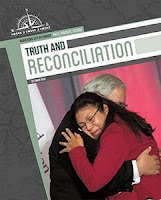June Reviews (Title, Author, Publication Date):

The Ruthless Elimination of Hurry, John Mark Comer, 29 Oct 2019
How to Stay Emotionally Healthy and Spiritually Alive in the Chaos of the Modern World
#TheRuthlessEliminationOfHurry #NetGalley
Something with a foreword by John Ortberg catches my eye as I enjoyed his "If You Want to Walk on Water, You’ve Got to Get Out of the Boat" (2001).
Part one: The problem
Part two: The solution
Intermission: Wait, what are the spiritual disciplines again?
Part three: Four practices for unhurrying your life
Epilogue: A quiet life
A short workbook with exercises to get you started on each of the four practices is available at johnmarkcomer.com/howtounhurry
The Notes at the end are fairly humorous.
Description (from NetGalley)
“Who am I becoming?”
That was the question nagging pastor and author John Mark Comer. Outwardly, he appeared successful. But inwardly, things weren’t pretty. So he turned to a trusted mentor for guidance and heard these words:
“Ruthlessly eliminate hurry from your life. Hurry is the great enemy of the spiritual life.”
It wasn’t the response he expected, but it was—and continues to be—the answer he needs. Too often we treat the symptoms of toxicity in our modern world instead of trying to pinpoint the cause. A growing number of voices are pointing at hurry, or busyness, as a root of much evil.
Within the pages of this book, you’ll find a fascinating roadmap to staying emotionally healthy and spiritually alive in the chaos of the modern world.

Lead Like It Matters to God, Richard Stearns, 30 Mar 2021
Values-Driven Leadership in a Success-Driven World
#LeadLikeItMatterstoGod #NetGalley
Chapters:
1. Leadership Changes the World
2. The Plans I Have for You (autobiography)
3. Surrender
4. Sacrifice
5. Trust
6. Excellence
7. Love
8. Humility
9. Integrity
10. Vision
22. Courage
12. Generosity
13. Forgiveness
14. Self-Awareness
15. Balance
16. Humor
17. Encouragement
18. Perseverance
19. Listening
20. Taking God to Work
Each chapter begins with a scripture, a leadership principle, and a quote or two. Notes with sources are included at the end of the book.
Description (from NetGalley)
Richard Stearns is a leader who has been tested as a CEO in both secular companies and also as the head of one of the world’s largest Christian ministries. After stints as CEO of Parker Brothers and then Lenox, Stearns accepted the invitation to leave his corporate career to become the president of World Vision US, where he became the longest serving president in their seventy-year history. During his tenure there he implemented corporate best practices, lowering overheads while tripling revenues. His leadership in calling the American church to respond to some of the greatest crises of our time, notably the HIV and AIDS pandemic, and the global refugee crisis, challenged Christians to embrace a bold vision for compassion, mercy, and justice.
In Lead Like It Matters to God, Stearns shares the leadership principles he has learned over the course of his remarkable career. As a leader who has navigated both secular and sacred spaces, Stearns claims that the values Christian leaders embrace in their workplaces are actually more important than the results they achieve—that God is more concerned about a leader's character than a leader's success. With wisdom, wit, and biblical teaching, Stearns shares captivating stories of his life journey and unpacks seventeen crucial values that can transform leaders and their organizations. When leaders embody values such as integrity, courage, excellence, forgiveness, humility, surrender, balance, generosity, perseverance, love, and encouragement, they not only improve their witness for Christ, they also shape institutions, influence culture, improve team performance, and create healthy workplaces where people can flourish. Through this book, Stearns will inspire a new generation of Christian leaders to boldly take their values into their workplaces to tangibly demonstrate the character of Christ, the love of Christ, and the truth of Christ as they live out their faith in full view of others.

Love Like You Mean It, Bob Lepine, 07 Jul 2020
The Heart of a Marriage that Honors God
#LoveLikeYouMeanIt #NetGalley
Chapters:
1. Everything Minus Love = Nothing
2. An odd Place to Begin
3. The Thing That is Better Than Life Itself
4. It's Not All About Me
5. It's My Way on the Love Way
6. Keep Calm and Keep Loving
7. It's Never Tight to Do What's Wrong
8. The Truth, the Whole Truth, and Nothing But
9. Be a Bulldog
10. Filling Up and Pouring Out
Each chapter has a few "Talk Together" section for reflection and discussion.
Includes a Notes section at the end showing sources.
Description (from NetGalley)
Every year, millions of men and women stand before friends and family to pledge their lifelong love to each other. Do they know what they’re getting into?
Unfortunately, many people have a shallow, superficial idea of what marriage is. As a result, many marriages don’t last, and many more married couples are trudging along looking for something more.
Love Like You Mean It gives husbands and wives a biblical understanding of what real love looks like in marriage by unpacking the ten attributes of genuine love listed in 1 Corinthians 13. Bob Lepine, marriage and family expert and host of the nationally syndicated radio program FamilyLife Today, helps husbands and wives discover that it’s not primarily emotions that define marital love, but actions and decisions that fuel emotions and cause marital love to grow.
Every person who is married, would like to be married one day, or wants to understand more about the biblical vision of marriage will find what they’re looking for as they dive deep into Love Like You Mean It.













